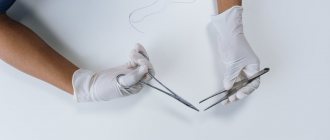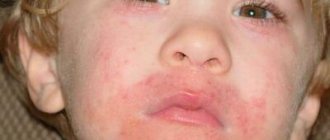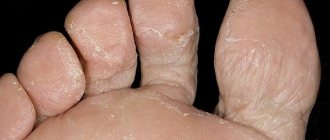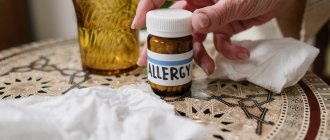Cracks in the feet rarely appear suddenly. As a rule, the appearance of such a crack is preceded by symptoms such as dryness and flaking of the skin. If the patient does not pay attention to these signs in a timely manner, the top layer of skin may rupture - a crack appears.
Depending on the depth of the cracks, podiatrists distinguish between superficial and deep cracks in the feet. Experts warn that if even superficial cracks appear, you must seek qualified medical help.
Many patients prefer to independently select remedies to solve the problem of cracked feet. However, such tactics will not bring the desired result - it is necessary, first of all, to identify the cause of the cracks and only then select the treatment methods necessary in each individual case.
What to do for cracks on the fingers and between the toes in adults and children: treatment
Of course, if the skin on your feet is dry, there are cracks that do not bleed, you may need to adjust your diet and make your shoes more comfortable. Below are recommendations that will help cope with shallow cracks at the initial stage of their occurrence:
- Use emollients. After each bath, it is necessary to apply a softening cream to the heels and skin of the toes, between them. You can highlight the cream Healer, Green Pharmacy. They contain cedar oil and other nourishing components that prevent the skin from drying out.
- Drink at least 2 liters of water per day. This applies not only to coffee, it is advisable to drink clean, mineral water without gas.
- Change your shoes. You should not allow your little toe to rub very hard against the shoe and fit tightly to it. Crossing your fingers is also not allowed, due to the narrow, uncomfortable toe.
- If you have general dry skin, take a course of treatment with vitamin A. It is sold in capsules at the pharmacy and is quite inexpensive.
- Control the humidity in the room. Buy a humidifier for your home and work. Make sure that the humidity does not fall below 60%. Often cracks in fingers occur due to dry air.
- Use special ointments and emollients to treat cracked feet.
- Use baths and decoctions to treat cracks.
- Use traditional medicine. These can be ointments and compresses, as well as various decoctions.
Softening your feet
Main symptoms
In the initial stages, the disease resembles common prickly heat in appearance: small pimples and redness appear on the epidermis. Over time, they begin to itch very much; when scratching, the upper layers are damaged and begin to peel off. Other unpleasant signs include:
- the formation of ulcers on the surface of the skin, which bleed heavily when damaged;
- the skin peels off and smells like cheese (in case of a fungal infection);
- After scratching, an infection gets into the wounds and the inflammatory process begins.
Peeling often occurs without itching or other unpleasant symptoms. This indicates excessive dryness of the epidermis, however, in the absence of timely treatment, the problem will only worsen.
The best ointments for cracks in the fingers and between the toes: list, method of application
A number of ointments can be used to treat cracked toes and between them. Their main advantage is that they apply well and act directly at the site of the lesion. Not absorbed into the gastrointestinal tract.
Review of ointments:
Zinc. A universal remedy that is often used for suppuration and bacterial infections. The main difference is that it disinfects the surface well, kills bacteria, fungi, and viruses, and promotes rapid healing.
Zinc ointment
Salicylic ointment. Contains salicylic acid. Often used for eczema and psoriasis, as well as a variety of bacterial skin lesions. Can be used when cracks appear on the toes, as well as between them. Effective against cracked heels.
Salicylic ointment
Balm Healer. It has a creamy consistency and contains a large amount of essential oils, as well as herbal decoctions. Softens the skin, makes it softer, and also helps exfoliate rough particles.
Balm Healer for feet
Balsam. A product that contains lactic acid. It helps exfoliate rough skin. In addition, the product contains essential, healing oils that soften the epidermis and fight cracks and corns. It is not recommended to use if the wound is bleeding.
Balsamed
Radevit. The ointment consists of a large number of vitamins, so it is advisable to use it specifically when there is a deficiency of nutrients in the body. Promotes rapid healing of cracks, as well as normalization of water-lipid metabolism in the epidermis.
Radevit
Gewol. An interesting and unusual remedy. It differs in that it does not work to eliminate any specific cause, but helps to normalize water-lipid metabolism in the skin. Therefore, it prevents further evaporation of moisture from the leather and its cracking.
Gewol
Prevention
Following these rules will help you avoid cracks:
- Everyday shoes should be comfortable and fit the size of your feet. It is important that it is made from natural material. In the summer, you will need to avoid contact with dust and dirt.
- Regular hygiene procedures to remove rough skin (you can use pumice stones, scrubs).
- Softening and nourishing the skin with the help of special products prevents the development of excessive dryness and the appearance of cracks.
- A balanced menu with a sufficient content of fat-soluble vitamins and microelements helps maintain the elasticity of the epidermis.
- It is necessary to avoid prolonged walking barefoot, as this contributes to the roughening of the skin of the feet and causes a violation of its integrity.
A preventive visit to the doctor will allow for early diagnosis of diseases and, if necessary, begin treatment.
The skin between the toes bursts in both adults and children for certain reasons. The appearance of a symptom cannot be ignored, as the problem may be a signal of serious changes in the body. A set of measures can completely restore the integrity and elasticity of the skin.
Folk remedies for the treatment of cracks in the fingers and between the toes: recipes
In addition to pharmaceutical products, traditional methods can also be used to treat cracked toes. The most effective are ointments that are made from beeswax, herbal extracts, and eggs.
Recipes:
- Egg ointment. To prepare it, you need to separate the white from the yolk. The yolk, in turn, is mixed with 5 ml of apple cider vinegar and 20 ml of sunflower oil. Next, you need to thoroughly beat it all until smooth. The paste should be applied to the affected areas, plastic bags should be put on the feet, and woolen socks on top of them. You need to go to bed with such compresses. Early in the morning, the feet are steamed, cracks and dead skin are removed using pumice. After this, moisturizer is applied.
- Bee ointment. It is created on the basis of propolis and beeswax. To prepare it, you need to finely chop a large onion and fry it in vegetable oil. Next, the mixture is filtered. It is necessary that the amount of sunflower oil in which the onions are fried is 120 ml. This liquid is mixed with 50 ml of beeswax, one pea of propolis is introduced. The mixture is placed in a water bath and stirred until the components are completely dissolved. Pour the paste into a dark container and store in the refrigerator. Apply at night.
- Plantain ointment. You need to grind one teaspoon of dry plantain herb into powder and add a couple of drops of oil. Next, add Vaseline to the mixture. You need 1 part plantain with oil and 10 parts Vaseline. When the paste becomes homogeneous, apply it to the damaged areas. Apply the ointment twice a day, morning and evening. It is advisable to steam the skin and wipe dry before applying.
- Onion oil. You need to chop 2 large onions and fry them in vegetable oil. Strain the mixture and add a few drops of sea buckthorn essential oil. Rub this substance into the cracks twice a day. You can make night healing compresses. To do this, cotton wool is soaked in oil and applied to the affected areas. Next, put on linen socks and sleep with these compresses.
Folk remedies
How to treat cracks on fingers and between toes with aloe and sea buckthorn oil?
Sea buckthorn is an effective remedy for treating cracked toes. With its help, it is possible to soften cracks and promote their healing.
Recipes for using aloe and sea buckthorn:
- For treatment, before going to bed, soak your feet in warm water with a small amount of baking soda added. Wipe dry and apply sea buckthorn oil, put the bag on top, and then wool socks. Wash your feet in the morning.
- Another great remedy for treating cracked heels is aloe. To use it, you need to keep the leaves in the refrigerator for several hours. After this, the sheet is cut lengthwise and applied to the damaged areas. It is advisable to steam your feet in warm water with a small amount of soap before doing this. Aloe applications are left for about 2-3 hours, or overnight.
- To achieve really good results, you need to use sea buckthorn oil and aloe every other time. That is, one night you make a compress from aloe, the second you make compresses from sea buckthorn. The course of treatment is 10 days.
Aloe for cracks
How long does it take to treat cracks in the thumbs, fingers and between the toes?
The effectiveness of the ointment depends on the severity of the disease and its cause. If the cracks are caused by improper heel care, then you can quickly deal with cracks, as well as peeling in the toes and between them. If the damage is caused by a fungus, then treatment with traditional methods may be ineffective.
Regarding medications, the treatment period is selected according to the instructions and is usually 7-14 days. Mycosis takes longer to treat. The treatment period can be more than 1 month. In order to increase the effectiveness of the ointment, antifungal drugs are recommended for oral administration. These are medications such as Ketoconazole, Nystatin, and Fluconazole. These drugs should not be taken without a doctor's prescription, because the symptoms of the disease may be similar, but their causes may differ. If you use traditional methods, ointments, and compresses to eliminate cracks, then on average the course of treatment is approximately 7-10 days.
Cracked toes
Causes of itching
The most obvious cause of itching is athlete's foot, scabies, dry or wet eczema. Infection can occur through contact with contaminated surfaces in public places, household items, and also by wearing someone else's shoes. In the presence of predisposing factors, the pathogen penetrates the skin, causing irritation, burning, and bruising. The fungus most often affects the tissues around the little finger and thumb.
Are people allowed into the pool with cracks on their fingers and between their toes?
Of course, if there is no serious damage, then no one will prohibit you from going to the pool. You need to think about the fact that if cracks in your legs are caused by a fungus, then it will quickly spread to other people, so you should refrain from visiting the pool until you are completely cured.
Recommendations:
- Visiting the pool is contraindicated not only because you can infect other visitors. It's dangerous to yourself. The fact is that in conditions of high humidity, as well as with an increase in the chlorine content in the water, the fungus becomes more aggressive and affects other fingers. Therefore, if you have cracks in only one area, after visiting the pool, the infection may spread to other areas.
- If you are not sure of the cause of the cracks, but the possibility of fungal infection is ruled out, fungal spores can get into these cracks. They often live in showers and swimming pools. A swimming pool is an excellent environment for fungal spores to spread and multiply. Because in conditions of high humidity they live long enough and reproduce well.
- Many dermatologists recommend using your own personal slippers when visiting rooms that are rented by the hour or hotels or swimming pools. Never step on the tiled floor with bare feet. After using the slippers, wash them with soap and dry. Only then put it in a bag, and before putting on clean, dry socks, apply regular Miramistin . will do .
- For prevention, you can use ointments based on ketoconazole and fluconazole . They prevent the growth of fungus. This way you won't get infected. If you yourself are a carrier of the fungus, we recommend that you refrain from visiting the pool. Before you recover, you will allow the infection to spread to other areas of the body.
Visiting the pool
Cracked fingers seem not at all dangerous, but they are not. A serious fungal infection can negatively affect the immune system and also disrupt the functioning of the entire body. We recommend that if cracks appear on your fingers, be sure to consult a doctor and not self-medicate.
What is the difference between maceration and mycosis?
In contrast to maceration, mycosis is sometimes caused by Trichophyton rubrum or Trichophyton interdigitale. Mycosis on the feet differs from maceration in both appearance and smell. The smell of mycosis is very characteristic and is easily recognized by an orthopedist.
The appearance of mycosis is distinguished by its yellowish-brown color and the presence of additional, not yet cracked, microscopic bubbles that appear next to the already cracked and jagged ones. The vesicles are filled with liquid containing fungal spores. Often they are so small that only the experienced eye of a podiatrist can see them with a magnifying glass. Deposits of necrotic, fungal epidermis can stick together, becoming a threat to the formation of interdigital ulcers, which are very painful and difficult to remove and heal.










